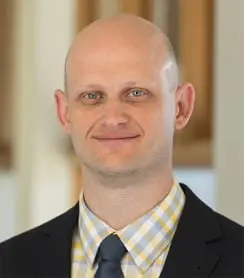 | 1 LU |
 | 1 LU |
Room: D137-138
Audience: Architects
Call to Action: Don’t just listen to students, teachers, and parents; listen to the spaces where they learn and teach and think about how the acoustics of these places shapes their experiences and think about the words that you would use to effectively describe them.
Abstract: Students require clear, intelligible instruction to be able to understand and process new ideas. Teachers and administrators need attentive students in an environment free from unnecessary distractions. Mechanical engineers have to figure out how to ventilate and provide thermal comfort throughout buildings while maintaining comfortable noise levels. And architects are tasked with synthesizing ideas from several disciplines and stakeholders into a cohesive project while providing distinct, acoustically separated learning spaces. Using interactive acoustic simulations, we will demonstrate and contextualize how sound isolation, background noise levels, distracting sounds, and reverberation control affect each of these stakeholders. This presentation is intended to be more show than tell, providing soundscapes for the audience to experience the different ways acoustics can affect building design and learning outcomes. We aim to provide a language with which to help effectively communicate ideas and needs related to acoustics. Further, we then want to apply this to guide a discussion about how acoustics affects different communities and how to consider and incorporate this into learning environments.
Learning Objectives:

Steve is an Acoustical Designer with the Greenbusch group with more than 10 years of consulting experience. He specializes in acoustic space design for classroom environments, civic and institutional buildings, recording studios, and healthcare facilities.

Adam leads the firm’s Acoustical department at Greenbusch, including the Acoustical Design, Audio/Video (A/V) Engineering, and Noise & Vibration Consulting practice groups. He is extensively experienced as an acoustical designer for building projects, noise & vibration consulting for environmental projects, and equally proficient as an A/V engineer. Adam is also a licensed professional engineer in multiple states.
Design of Educational Facilities
Acts as a resource to the design team in providing ongoing guidance and support to ensure that the emerging and ultimate design aligns with the established community vision, education goals, future programming, written design standards, best/next practices and education policy.